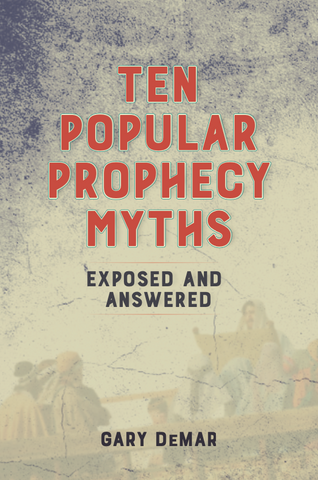Important Note: Gary DeMar’s Facebook page has been taken down. To keep up with the latest from Gary and American Vision or to continue the conversation from articles, podcasts, or videos, please go to the AV Facebook page here.
Gary responds to a listener from Australia that asks about how certain Greek words are translated in the new Legacy Standard Bible.
An indispensable rule in Bible interpretation is understanding a text in terms of its original setting and audience, always asking the question, “How would those who first picked up copies of the gospels and epistles have understood what they were reading?” Louis Berkhof, following Milton Terry’s injunction that we should “place ourselves in the position of the sacred writers,” stresses that the interpreter
must place himself on the standpoint of the author, and seek to enter into his very soul, until he, as it were, lives his life and thinks his thoughts. This means that he will have to guard carefully against the common mistake of transferring the author to the present day and making him speak the language of the twentieth century. If he does not avoid this, the danger exists, as McPheeters expresses it, that “the voice he hears (will) be merely the echo of his own ideas.”[1]
Reading modern-day concepts, whether scientific, geographical, or academic,[2] back into the Bible can cause insurmountable interpretive problems. For example, how many times have you heard a minister claim that the gospel is like “dynamite”? The comparison is made because the Greek word dunamis, translated “power” (Rom. 1:16), is the same word Alfred Nobel chose in 1866 to name his explosive concoction. Since “power” and “dynamite” share the same Greek word (dunamis), the New Testament use of “power” must share the characteristics of dynamite. D. A. Carson describes this as “an appeal to a kind of reverse etymology,”[3] reading modern definitions of words back into ancient writings. The effects of dynamite were unknown by the New Testament writers. Paul was not thinking of exploding sticks of dynamite when he used dunamis to describe the power of the gospel any more than he was thinking about the power expended when the Space Shuttle takes off from Cape Canaveral. Our understanding of the biblical use of dunamis has to be understood in terms of how it was understood in Paul’s day. “[Gordon] Fee and [Douglas] Stuart rightly emphasize that ‘the true meaning of the biblical text for us is what God originally intended it to mean when it was first spoken.’[4] We must first determine what a text meant ‘in their town’ before we can determine what it means and how we should apply that meaning to our own time and culture.”[5]
In a similar way, we should not read twenty-first century geographical knowledge into the Bible. For example, were the cartographers of Jesus’ day wrong when they called the Sea of Galilee a sea rather than a lake (Matt. 4:18)? Our definition of “sea” should not be the interpretive standard for the New Testament. Many commentators misinterpret what Jesus meant when He stated that He would be “three days and three nights in the heart of the earth” (12:40) because they do not understand the statement in terms of Jerusalem-centered geography or in terms of Herbaic idiom.[6] Equally so, we should not read into the Bible our conception of what we now know about our world.

Ten Popular Prophecy Myths Exposed and Answered
As a result of many failed predictions, many Christians are beginning to take a second look at a prophetic system that they were told is the only one that takes the literal interpretation of the Bible seriously. Gary DeMar has taken on the task of exposing some of the popular myths foisted upon the public by prophetic speculators.
Buy NowGary responds to a listener from Australia that asks about how certain Greek words are translated in the new Legacy Standard Bible. Presuppositions, especially eschatological ones, are powerful and affect how translators interpret Greek words, which in turn influences their translation efforts.
Click here for today’s episode
Click here to browse all episodes of The Gary DeMar Podcast
[1] Louis Berkhof, Principles of Biblical Interpretation (Grand Rapids, MI: Baker Book House, [1950] 1974), 115.
[2] By academic I mean “scientific precision.” While estimates and over-generalizations might not be suited for today’s academic research papers, they are perfectly appropriate for conveying God’s redemptive covenant.
[3] See D.A. Carson, Exegetical Fallacies, 2nd ed. (Grand Rapids, MI: Baker Book House, 1996), 34.
[4] Gordon D. Fee and Douglas Stuart, How to Read the Bible for All Its Worth: A Guide to Understanding the Bible, 2nd ed. (Grand Rapids, MI: Zondervan, 1993), 26.
[5] J. Scott Duvall and J. Daniel Hays, Grasping God’s Word: A Hands-On Approach to Reading, Interpreting, and Applying the Bible (Grand Rapids, MI: Zondervan, 2001), 97.
[6] “Heart of the earth” has reference to Jerusalem which was considered to be the center of the world. “Three days and three nights” most likely refers to Thursday night in the Garden of Gethsemane to His burial through Sunday morning. See Ralph Woodrow, Three Days and Three Nights—Reconsidered in the Light of Scripture (Riverside, CA: Ralph Woodrow Evangelistic Association, Inc., 1993).

